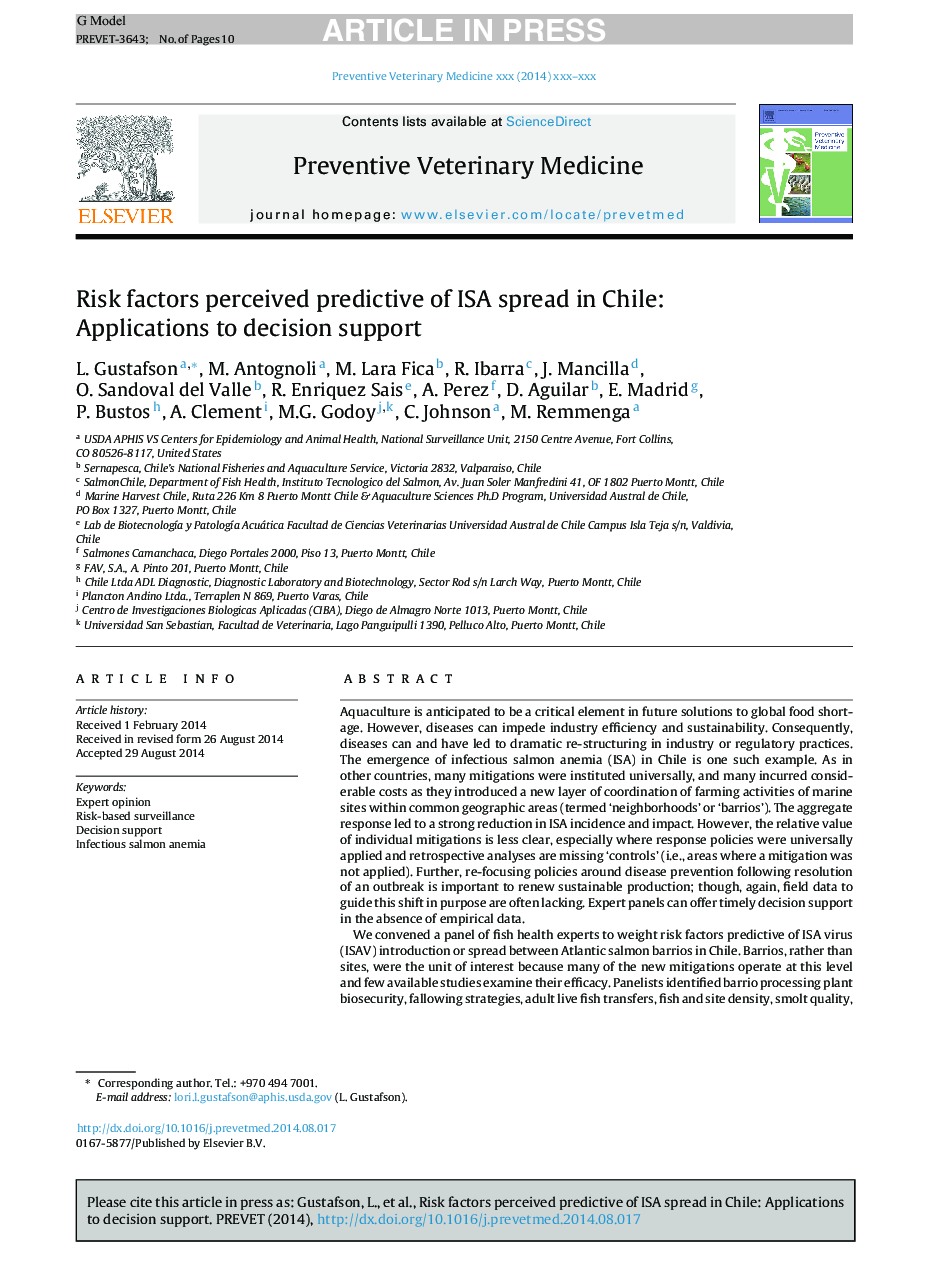| Article ID | Journal | Published Year | Pages | File Type |
|---|---|---|---|---|
| 5793474 | Preventive Veterinary Medicine | 2014 | 10 Pages |
Abstract
We convened a panel of fish health experts to weight risk factors predictive of ISA virus (ISAV) introduction or spread between Atlantic salmon barrios in Chile. Barrios, rather than sites, were the unit of interest because many of the new mitigations operate at this level and few available studies examine their efficacy. Panelists identified barrio processing plant biosecurity, fallowing strategies, adult live fish transfers, fish and site density, smolt quality, hydrographic connection with other neighborhoods, presence of sea lice (Caligus rogercresseyi), and harvest vessel biosecurity as factors with the greatest predictive strength for ISAV virulent genotype ('HPR-deleted') occurrence. Fewer factors were considered predictive of ISAV HPR0 genotype ('HPR0') occurrence, with greatest strengths assigned to fish and site density, adult live fish transfers, and smolt facility HPR0 status. Field validation based on ISAV and risk factor occurrence after panel completion generally supports expert estimates, and highlights a few factors (e.g., broodstock HPR0 status) less conclusive in the original study. Results inform legislation, industry best management practices and surveillance design.
Related Topics
Life Sciences
Agricultural and Biological Sciences
Animal Science and Zoology
Authors
L. Gustafson, M. Antognoli, M. Lara Fica, R. Ibarra, J. Mancilla, O. Sandoval del Valle, R. Enriquez Sais, A. Perez, D. Aguilar, E. Madrid, P. Bustos, A. Clement, M.G. Godoy, C. Johnson, M. Remmenga,
